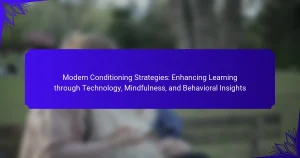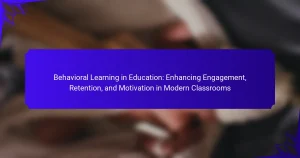Effective learning and lasting change can be achieved through behavior modification techniques. These techniques rely on principles such as reinforcement, punishment, and shaping behaviors. Key attributes include clarity of goals, consistent reinforcement, and tailored strategies. Additionally, technology can enhance these methods by providing personalized feedback and tracking progress, while addressing common challenges is crucial for success.
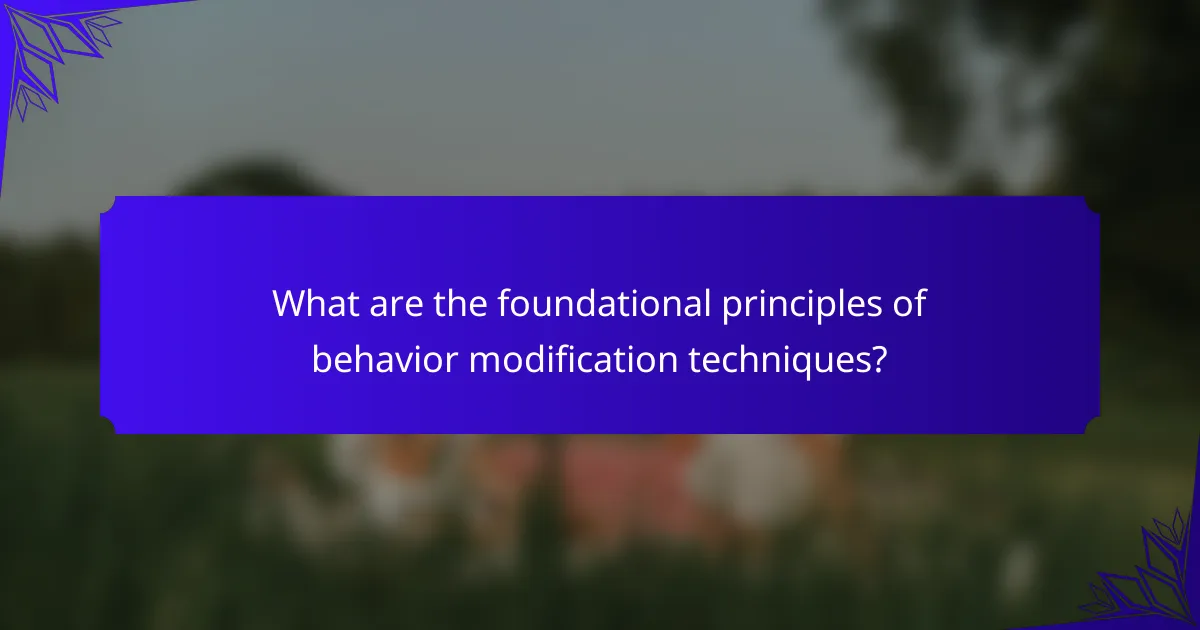
What are the foundational principles of behavior modification techniques?
The foundational principles of behavior modification techniques include reinforcement, punishment, and shaping behaviors. Reinforcement increases desired behaviors through rewards, while punishment decreases unwanted behaviors. Shaping involves gradually guiding behavior towards a desired outcome through successive approximations. These principles are essential for effective learning and lasting behavioral change.
How do reinforcement and punishment shape learning?
Reinforcement and punishment significantly influence learning by modifying behavior. Reinforcement encourages desired behaviors through rewards, while punishment discourages unwanted behaviors through consequences. Effective behavior modification techniques include positive reinforcement, negative reinforcement, and appropriate punishment strategies. These approaches promote lasting change by establishing clear expectations and consequences. For example, in educational settings, praise or rewards for good performance can motivate students, whereas consistent consequences for misbehavior can lead to improved discipline.
What role does operant conditioning play in behavior change?
Operant conditioning is crucial for behavior change, as it reinforces desired behaviors through rewards and discourages unwanted actions through consequences. This technique helps individuals learn effectively by associating specific behaviors with positive or negative outcomes. For example, consistent praise for completing tasks can increase motivation and engagement in learning environments. The effectiveness of operant conditioning is enhanced by tailoring reinforcement strategies to individual preferences, making the approach more personalized and impactful.
How can classical conditioning be applied in modern learning environments?
Classical conditioning can enhance modern learning by creating associations between stimuli and desired behaviors. This technique reinforces learning through consistent rewards or consequences linked to specific actions. For example, using positive reinforcement, such as praise or incentives, can increase student engagement and motivation.
Incorporating classical conditioning involves identifying triggers that lead to desired behaviors. Educators can establish routines where specific cues signal learning activities, fostering a predictable environment. This predictability helps students feel secure, enhancing their ability to focus and absorb information.
Furthermore, the application of classical conditioning can lead to lasting change. By consistently pairing learning tasks with positive outcomes, students develop a conditioned response that encourages ongoing participation and enthusiasm for learning. This approach not only modifies behavior but also cultivates a positive attitude towards education.
Ultimately, integrating classical conditioning into learning environments promotes effective behavior modification, resulting in improved educational outcomes and a more engaged student body.

What are the universal attributes of effective behavior modification techniques?
Effective behavior modification techniques share universal attributes that enhance learning and promote lasting change. Key attributes include clarity of goals, consistent reinforcement, and the application of tailored strategies.
Clarity of goals ensures individuals understand the desired behaviors, making it easier to focus efforts. Consistent reinforcement, whether positive or negative, strengthens the association between behavior and outcomes. Tailored strategies address individual needs, ensuring techniques resonate and are effective.
Other important attributes include the use of measurable outcomes, which allow for tracking progress, and the incorporation of feedback mechanisms that enable adjustments. These elements work together to create a robust framework for behavior modification.
How can consistency enhance learning outcomes?
Consistency enhances learning outcomes by reinforcing behavior modification techniques, leading to effective learning and lasting change. Regular application of these techniques creates a stable learning environment, promoting retention and understanding. For instance, consistent reinforcement of desired behaviors helps learners internalize concepts, making them more likely to apply knowledge in practical situations. This approach fosters a growth mindset, encouraging learners to persist despite challenges. Ultimately, consistency in behavior modification cultivates a culture of continuous improvement, enhancing overall educational effectiveness.
What importance does timing hold in reinforcement strategies?
Timing is crucial in reinforcement strategies as it influences the effectiveness of behavior modification. Immediate reinforcement after a desired behavior strengthens the association, leading to quicker learning and retention. Delayed reinforcement can weaken this connection, making it less effective. Consistent timing enhances predictability, which is essential for establishing routines and habits. In behavior modification, the precision of timing can significantly impact the overall success of learning outcomes.
How does goal setting influence behavior modification?
Goal setting significantly influences behavior modification by providing clear objectives that enhance motivation and focus. When individuals establish specific, measurable goals, they are more likely to engage in behaviors that align with those goals. This alignment fosters a sense of accountability and encourages persistence in overcoming obstacles. Research indicates that setting achievable goals can lead to increased self-efficacy, which is vital for sustaining behavior change. Additionally, tracking progress towards goals can reinforce positive behaviors, creating a feedback loop that supports ongoing modification efforts.
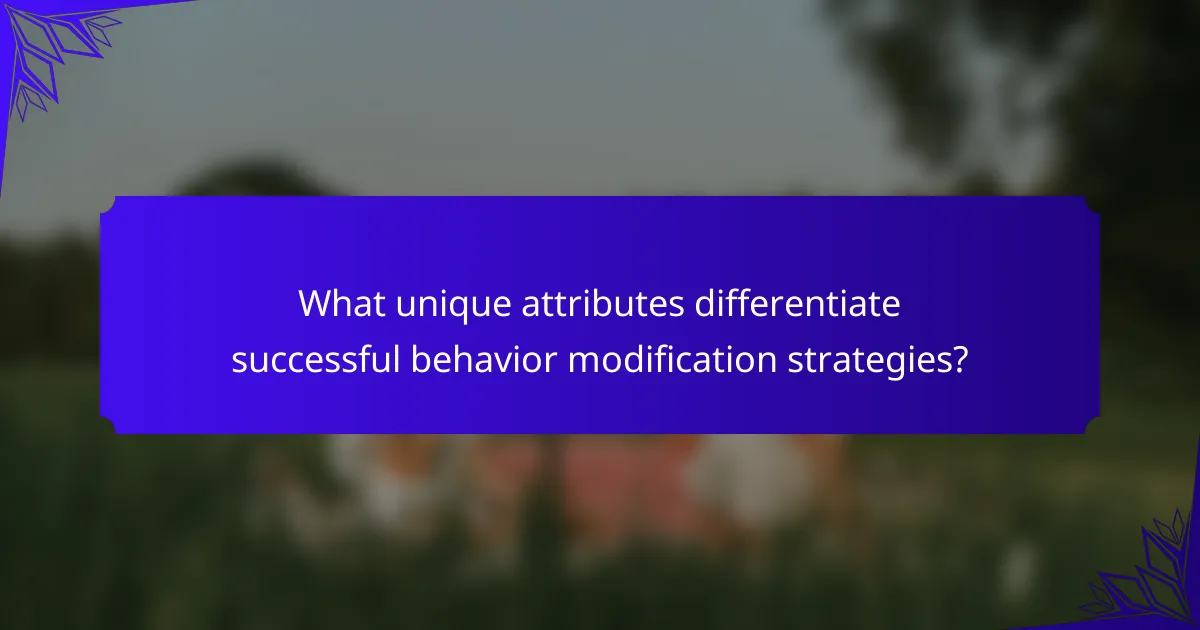
What unique attributes differentiate successful behavior modification strategies?
Successful behavior modification strategies are distinguished by their adaptability, specificity, and reinforcement mechanisms. Adaptability allows these strategies to be tailored to individual needs, ensuring relevance and effectiveness. Specificity involves setting clear, measurable goals that guide the learning process and facilitate tracking progress. Reinforcement mechanisms, such as positive feedback and rewards, strengthen desired behaviors, making them more likely to persist over time. These unique attributes create a robust framework for implementing effective behavior modification techniques.
How can personalization of techniques improve effectiveness?
Personalization of techniques enhances effectiveness by tailoring approaches to individual learning styles. This alignment fosters engagement, increases motivation, and improves retention of information. Personalized strategies can adapt to unique attributes such as pace, interests, and prior knowledge, leading to more impactful behavior modification. As a result, learners experience lasting change and better outcomes.
What innovative tools are emerging in behavior modification?
Emerging tools for behavior modification include gamification platforms, wearable technology, and mobile applications. These innovations leverage data analytics to personalize learning experiences, enhancing engagement and retention. For example, gamification can increase motivation by rewarding users for achieving specific goals. Wearable devices track physiological responses, providing real-time feedback that encourages positive behavior changes. Mobile apps offer accessibility, allowing users to implement techniques anytime, fostering continuous learning and adaptation.
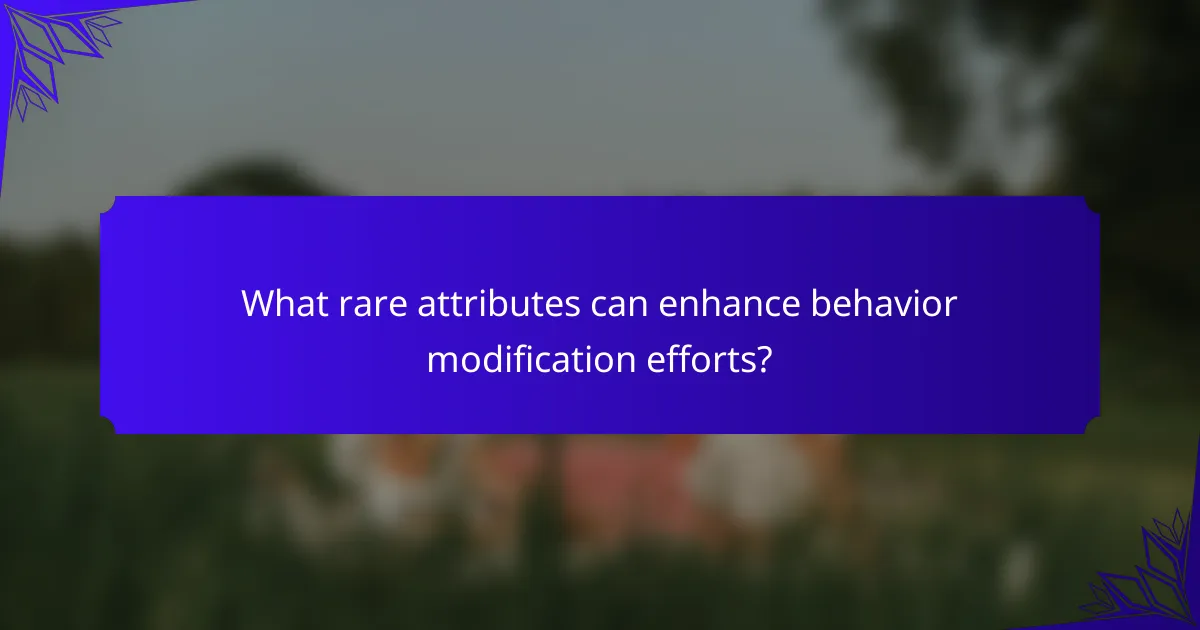
What rare attributes can enhance behavior modification efforts?
Incorporating rare attributes can significantly enhance behavior modification efforts. Unique reinforcement strategies, such as personalized feedback or gamification elements, can motivate learners effectively. Additionally, integrating emotional intelligence training can foster deeper connections, promoting lasting change. These rare attributes create a more engaging learning environment, leading to improved outcomes.
How do cultural factors influence behavior modification techniques?
Cultural factors significantly shape behavior modification techniques by influencing motivation, perception, and communication styles. Understanding cultural norms and values enhances the effectiveness of these techniques. For example, collectivist cultures may respond better to group-based reinforcement, while individualistic cultures may favor personal achievement recognition. Additionally, cultural attitudes toward authority can affect how individuals accept and engage with behavior modification strategies. Tailoring approaches to align with cultural contexts fosters greater acceptance and long-term success in learning and behavior change.
What are the implications of neuroplasticity in learning and behavior change?
Neuroplasticity significantly enhances learning and behavior change by allowing the brain to reorganize itself. This adaptability enables individuals to develop new skills and modify behaviors effectively. Techniques such as repetition, reinforcement, and mindfulness leverage neuroplasticity, promoting lasting change. Research indicates that consistent practice can strengthen neural pathways, making desired behaviors more automatic. As a result, applying behavior modification techniques can lead to improved learning outcomes and sustainable personal growth.
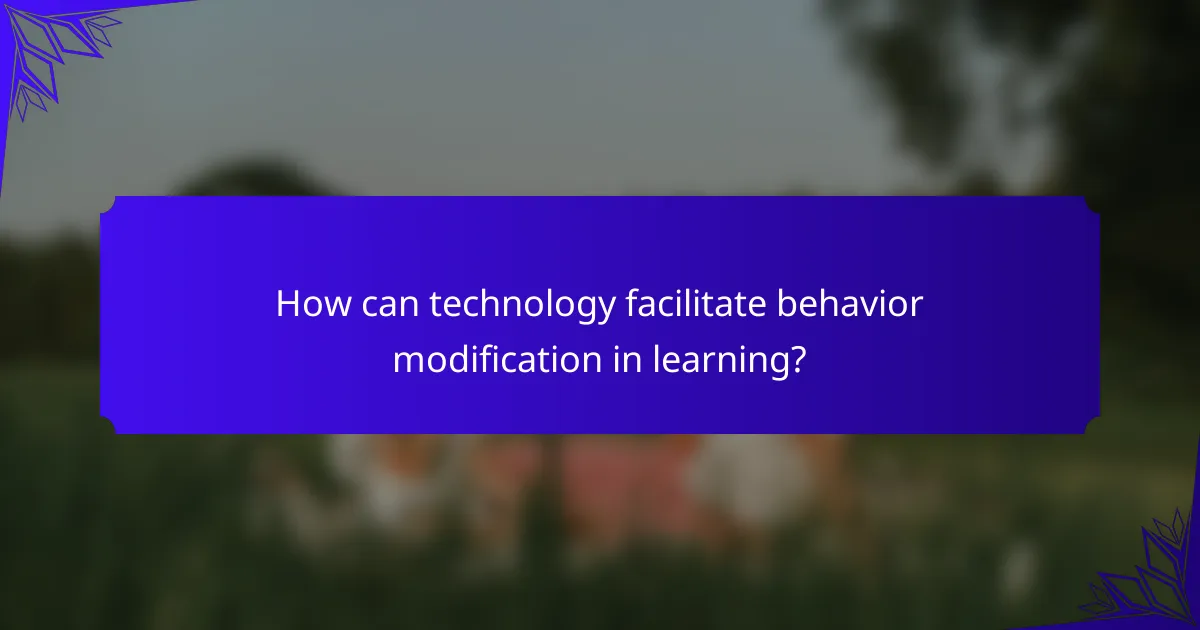
How can technology facilitate behavior modification in learning?
Technology can enhance behavior modification in learning by providing personalized feedback, tracking progress, and facilitating engagement. Tools like adaptive learning platforms adjust content based on individual performance, promoting sustained motivation. Gamification elements, such as rewards and challenges, reinforce positive behaviors, making learning more enjoyable. Data analytics enable educators to identify patterns and tailor interventions, ensuring effective learning experiences.
What role do mobile applications play in behavior tracking?
Mobile applications play a crucial role in behavior tracking by providing real-time data collection and analysis. They enable users to monitor habits, set goals, and receive feedback, which fosters accountability and motivation. Features like notifications and reminders enhance engagement, making it easier for individuals to adhere to behavior modification techniques. Additionally, data visualization tools within these apps help users understand their progress, leading to more informed decisions and lasting change.
How can virtual reality be utilized for behavior modification?
Virtual reality can effectively modify behavior by immersing users in simulated environments that reinforce learning. This technology allows for experiential learning, where users practice skills in safe, controlled settings.
One unique attribute of virtual reality is its ability to provide immediate feedback, enhancing the learning process. For example, users can engage in role-playing scenarios that simulate real-life challenges, promoting problem-solving skills.
Additionally, virtual reality can personalize experiences to cater to individual learning styles, increasing engagement and retention. Studies show that immersive experiences lead to higher motivation and sustained behavioral change compared to traditional methods.
As a result, integrating virtual reality into behavior modification strategies can yield lasting change, making learning more impactful and enjoyable.
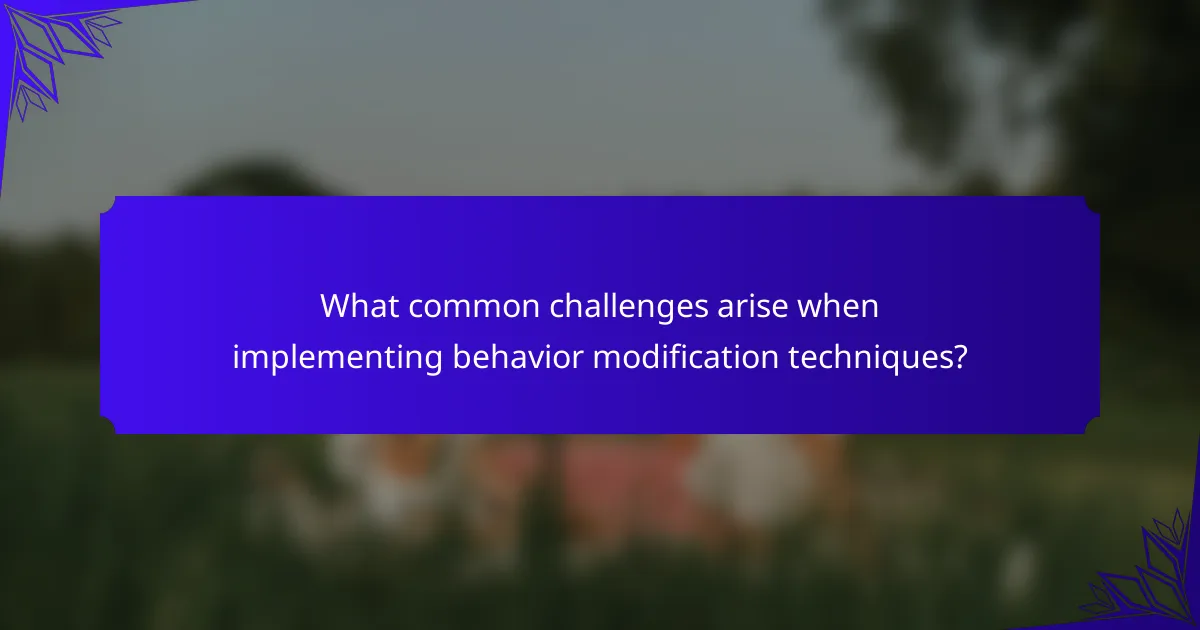
What common challenges arise when implementing behavior modification techniques?
Common challenges when implementing behavior modification techniques include resistance to change, lack of motivation, inconsistent application, and insufficient feedback. These issues can hinder progress and reduce the effectiveness of the techniques. Resistance often stems from comfort with existing behaviors, while lack of motivation may arise from unclear goals or perceived difficulty. Inconsistent application of techniques can lead to confusion and mixed results. Lastly, insufficient feedback prevents individuals from understanding their progress, making it difficult to adjust strategies effectively. Addressing these challenges is crucial for successful behavior modification.
How can resistance to change be addressed effectively?
To effectively address resistance to change, implement clear communication, engage stakeholders, and provide support. Establishing a transparent dialogue helps clarify the reasons for change, reducing uncertainty. Involving team members fosters ownership and commitment. Offering training and resources ensures individuals feel equipped to adapt.
What strategies can overcome lack of motivation in learners?
To overcome lack of motivation in learners, implement behavior modification techniques like setting clear goals, providing positive reinforcement, and fostering a supportive environment. These strategies create a structured approach that encourages engagement and persistence.
Establish specific, achievable objectives to give learners direction. Positive reinforcement can include praise or rewards for progress, which boosts confidence and motivation. Additionally, fostering a supportive environment involves collaboration and open communication, allowing learners to feel valued and understood.
By integrating these techniques, educators can effectively enhance motivation and facilitate lasting change in learning behaviors.
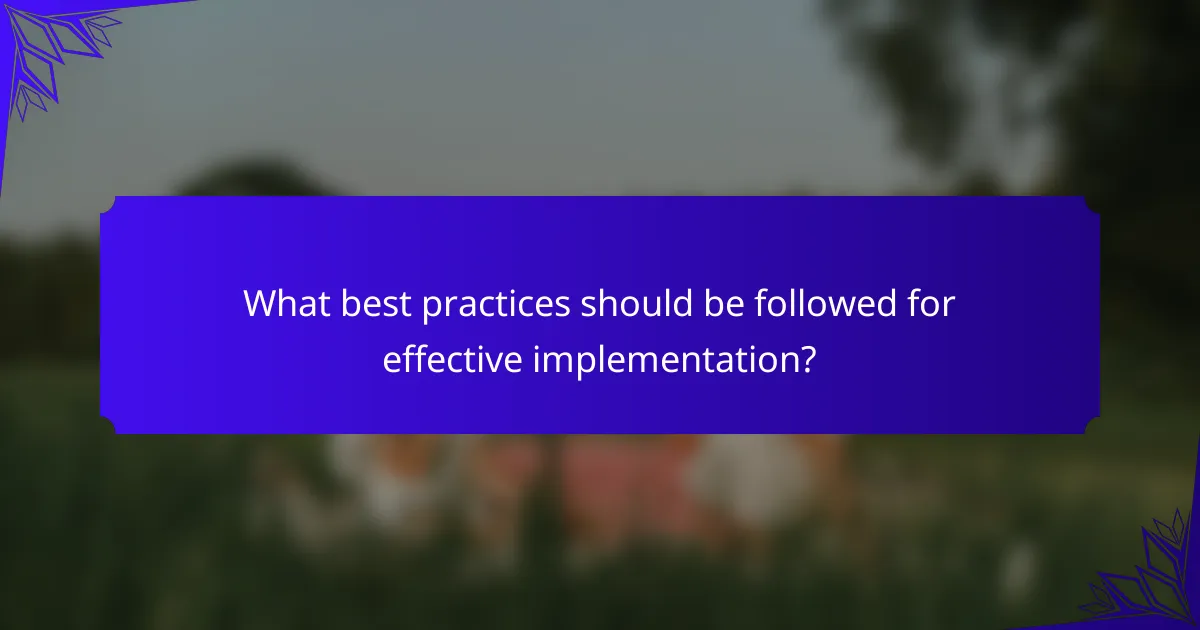
What best practices should be followed for effective implementation?
To effectively implement behavior modification techniques, establish clear goals, maintain consistency, and monitor progress. Engage learners through positive reinforcement and adapt strategies based on feedback. Regularly review and adjust techniques to ensure lasting change.
How can feedback loops be integrated into learning processes?
Integrating feedback loops into learning processes enhances retention and adaptation. Regularly collect feedback from learners to assess understanding and adjust teaching methods accordingly. This iterative process encourages engagement and reinforces learning objectives. Utilize surveys, quizzes, and discussions to gather insights, enabling personalized learning experiences. As a result, learners feel more supported and motivated, leading to lasting change.
What are the key elements of a successful behavior modification plan?
A successful behavior modification plan includes clear goals, consistent monitoring, positive reinforcement, and adaptability. Establishing specific, measurable objectives helps track progress. Regular assessments ensure the plan remains effective and relevant. Positive reinforcement encourages desired behaviors, while flexibility allows adjustments based on individual responses.
What common mistakes should be avoided in behavior modification?
To effectively implement behavior modification techniques, avoid common mistakes such as setting unrealistic goals, neglecting individual differences, and failing to monitor progress. These pitfalls can hinder learning and lasting change.
1. Setting unrealistic goals can lead to frustration and disengagement.
2. Neglecting individual differences may result in ineffective strategies for diverse learners.
3. Failing to monitor progress prevents necessary adjustments to the approach.
4. Inconsistency in applying techniques can confuse individuals and undermine efforts.
5. Lack of reinforcement can lead to regression in behavior change.
6. Ignoring environmental factors may overlook external influences on behavior.
How can continuous evaluation improve behavior modification efforts?
Continuous evaluation enhances behavior modification by providing real-time feedback and insights into progress. This iterative process allows for timely adjustments, ensuring techniques remain effective. Regular assessment identifies areas needing improvement, fostering motivation and accountability. As a result, learners experience sustained engagement and better outcomes.
